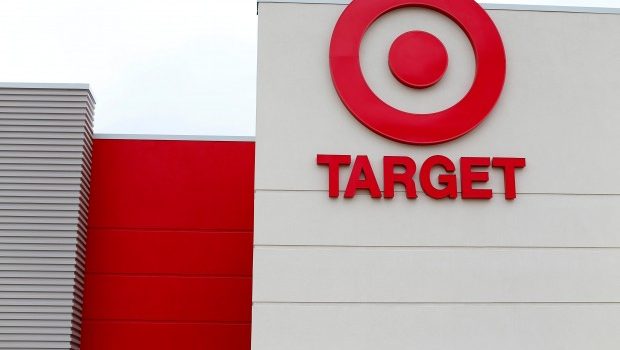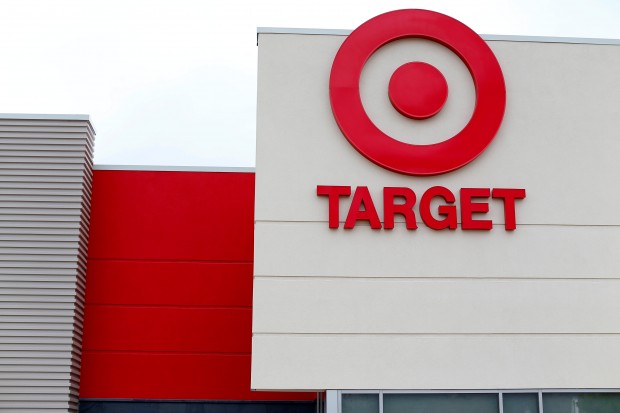


By Richa Naidu and Nandita Bose
Feb 28 (Reuters) – Target Corp shares plunged on Tuesday after executives issued a full-year profit forecast that fell well below analyst estimates and said the retailer would lower prices to compete with deep-discounting rivals.
Target at its investor day conference vowed aggressive promotions and said new brands and investments in technology and small stores will allow it to eventually win back market share.
Although its e-commerce operation is growing, Target reported its third straight quarter of lower sales from existing stores, citing “unexpected softness” and raising new questions about the health of large retailers in the United States.
Target also forecast first-quarter profit short of Wall Street estimates. Shares sank 12 percent to $58.84, on track for their biggest one-day percentage drop in more than 18 years.
The stock has lost a quarter of its value since the 2016 holiday season started in November, back at levels last seen in August 2014.
The retail industry faces pressure from lackluster U.S. economic growth, intense competition from Amazon.com and other online rivals and concerns about President Donald Trump‘s planned border tax.
With Tuesday’s announcement, Target’s brand identity as a source for “cheap chic” fashion and other low-cost stylish goods is giving way to the push for lower prices, analysts said.
That prompted declines across the retail sector. Wal-Mart Stores Inc was down 1.4 percent, Kroger Co fell 1.5 percent and Macy’s Inc lost 1.6 percent. Dollar General Corp fell 4.4 percent.
“It’s that drum beat of bad retail news of the big-box retailers. So in case you thought maybe that was over, Target certainly reminded us all that it didn’t,” said Mark Spellman, portfolio manager at Alpine Funds in Purchase, New York.
But the drop in Target shares also reflects missteps by the company, said Kim Forrest, senior equity research analyst at Fort Pitt Capital Group in Pittsburgh.
“Target didn’t do its job of trying to engage its customers and the theory is they may have lost the ability to do it,” she said. “That’s what the (stock) market is telling you.”
The retailer plans “aggressive promotional activities” that would erode its operating profit by $1 billion this year, Chief Executive Brian Cornell said at the investor day.
Target said it planned to invest $2 billion in 2017 on analytics, supply chain and opening 100 more small-format stores in urban neighborhoods and college markets. It also plans to launch more than 12 exclusive brands.
Target forecast full-year earnings of $3.80-$4.20 per share from continuing operations, while analysts on average were expecting profit above $5.00, according to Thomson Reuters I/B/E/S.
TARGETING GROCERY SHOPPERS?
One of the first areas where prices will come down at Target is food, the company said. Food and pet supplies account for about a fifth of Target sales, according to its annual report.
With Wal-Mart and Amazon already facing off on price, including in the grocery aisle, Target is in an uncomfortable middle ground. And where Wal-Mart has established itself as the nation’s largest grocer, Target’s foray into food has been less successful.
“Target is neither a full-line grocer nor a player with lots of niche specialty products; it is neither a high-end player, nor a price-focused discounter,” said Neil Saunders, managing director of GlobalData Retail.
Target’s grocery offerings are “confusing,” he said.
Bigger rival Wal-Mart aggressively cut prices across the board two years ago and boosted its online presence. Target could not act then due to costs related to a massive data breach and its decision to pull out of Canada.
“Target’s got bigger issues (than Wal-Mart had),” said analyst Brian Yarbrough of Edward Jones.
“They’ve struggled since Brian Cornell’s come on to figure out what to do with their grocery department … I think Target’s turnaround could take a little bit longer than Wal-Mart because it’s a different situation and probably a little more difficult.”
The move to cut prices may be aimed less at competing directly with grocery rivals, and more toward drawing in well-heeled shoppers who might otherwise turn to Amazon, said Matt Sargent, senior vice president of retail at research firm Frank N. Magid Associates.
“The income profile of the Target customer is more in line with the digital shopper that utilizes Amazon Prime,” he said.
SALES DECLINE
Target’s same-store sales fell 1.5 percent in the fourth quarter, which includes the holiday shopping season. That was steeper than the 1.3 percent drop analysts estimated, according to research firm Consensus Metrix.
Target expects same-store sales to decline by low-single digits in fiscal 2017. Analysts, on average, were expecting same-store sales to increase 0.4 percent in 2017.
A 34 percent jump in digital sales was not enough to keep overall net sales in the black. They fell for the sixth straight quarter, declining to $20.69 billion, while adjusted profit of $1.45 per share was shy of the $1.51 expected.
(Reporting by Richa Naidu, Yashaswini Swamynathan and Nandita Bose; Additional reporting by Siddharth Cavale in Bengaluru and Rodrigo Campos in New York; Writing by Nick Zieminski; Editing by Savio D’Souza and Meredith Mazzilli)
